+Search query
-Structure paper
| Title | The structure of the Physcomitrium patens photosystem I reveals a unique Lhca2 paralogue replacing Lhca4. |
|---|---|
| Journal, issue, pages | Nat Plants, Vol. 8, Issue 3, Page 307-316, Year 2022 |
| Publish date | Feb 21, 2022 |
 Authors Authors | C Gorski / R Riddle / H Toporik / Z Da / Z Dobson / D Williams / Y Mazor /  |
| PubMed Abstract | The moss Physcomitrium patens diverged from green algae shortly after the colonization of land by ancient plants. This colonization posed new environmental challenges, which drove evolutionary ...The moss Physcomitrium patens diverged from green algae shortly after the colonization of land by ancient plants. This colonization posed new environmental challenges, which drove evolutionary processes. The photosynthetic machinery of modern flowering plants is adapted to the high light conditions on land. Red-shifted Lhca4 antennae are present in the photosystem I light-harvesting complex of many green-lineage plants but absent in P. patens. The cryo-EM structure of the P. patens photosystem I light-harvesting complex I supercomplex (PSI-LHCI) at 2.8 Å reveals that Lhca4 is replaced by a unique Lhca2 paralogue in moss. This PSI-LHCI supercomplex also retains the PsaM subunit, present in Cyanobacteria and several algal species but lost in vascular plants, and the PsaO subunit responsible for binding light-harvesting complex II. The blue-shifted Lhca2 paralogue and chlorophyll b enrichment relative to flowering plants make the P. patens PSI-LHCI spectroscopically unique among other green-lineage supercomplexes. Overall, the structure represents an evolutionary intermediate PSI with the crescent-shaped LHCI common in vascular plants, and contains a unique Lhca2 paralogue that facilitates the moss's adaptation to low-light niches. |
 External links External links |  Nat Plants / Nat Plants /  PubMed:35190662 PubMed:35190662 |
| Methods | EM (single particle) |
| Resolution | 2.8 - 3.76 Å |
| Structure data | EMDB-23023, PDB-7ksq: EMDB-23034, PDB-7ku5: EMDB-23040, PDB-7kux: |
| Chemicals | 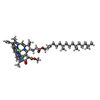 ChemComp-CL0: 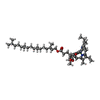 ChemComp-CLA: 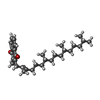 ChemComp-PQN: 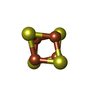 ChemComp-SF4: 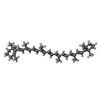 ChemComp-BCR: 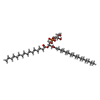 ChemComp-LHG: 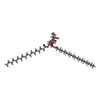 ChemComp-LMG: 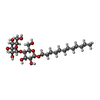 ChemComp-LMT: 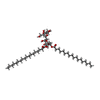 ChemComp-DGD: 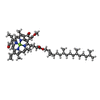 ChemComp-CHL: 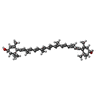 ChemComp-LUT:  ChemComp-HOH: |
| Source |
|
 Keywords Keywords | PHOTOSYNTHESIS / PSI / electron transport / chlorophyll / Antenna / light harvesting / membrane protein |
 Movie
Movie Controller
Controller Structure viewers
Structure viewers About Yorodumi Papers
About Yorodumi Papers




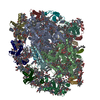

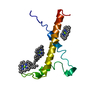

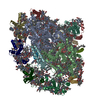
 physcomitrium patens (plant)
physcomitrium patens (plant)